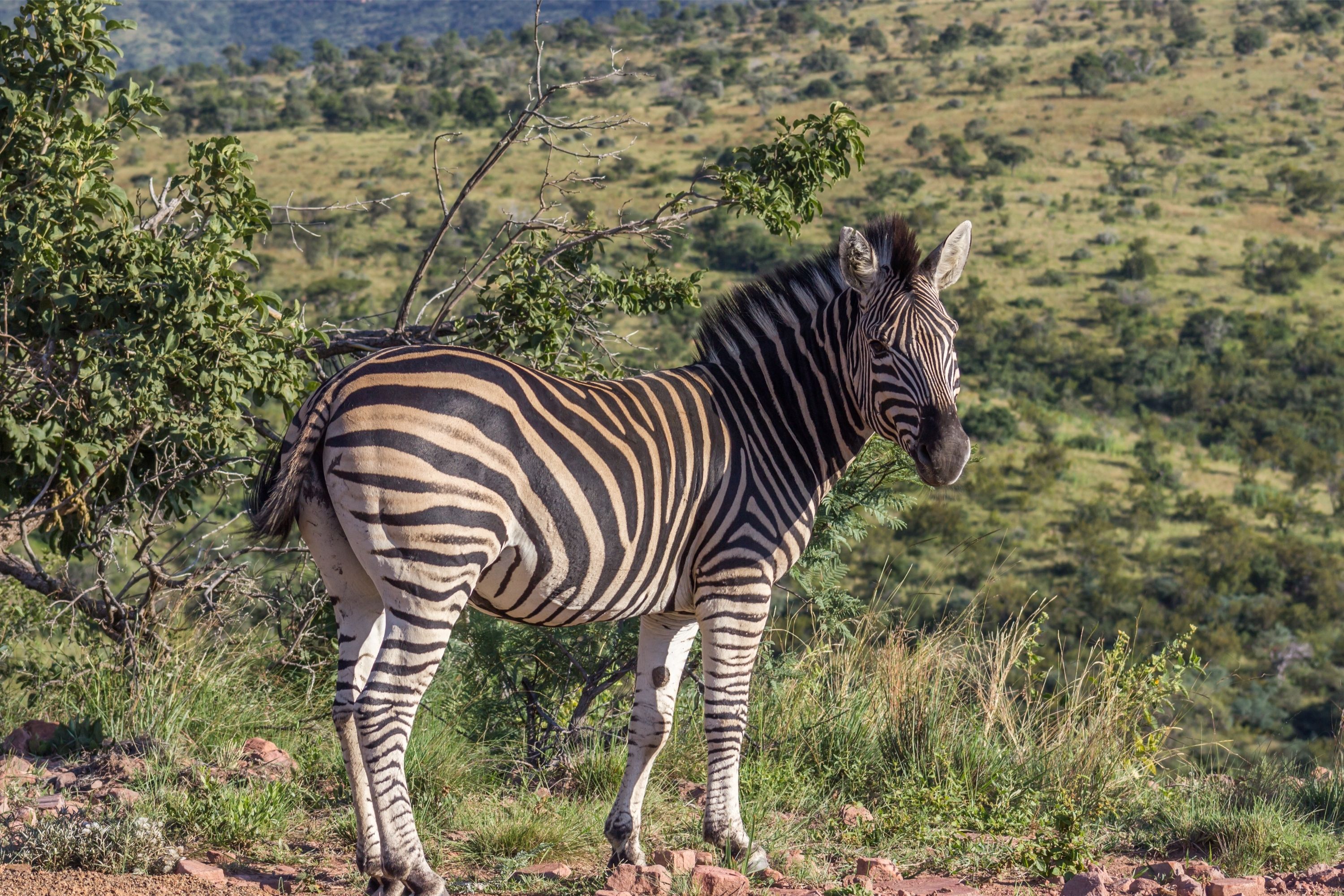Plains zebra
(Equus quagga)

Description
The plains zebra (Equus quagga, formerly Equus burchellii), also known as the common zebra, is the most common and geographically widespread species of zebra. Its range is fragmented, but spans much of southern and eastern Africa south of the Sahara. Six or seven subspecies have been recognised, including the extinct quagga which was thought to be a separate species. More recent research supports variations in zebra populations being clines rather than subspecies. The plains zebra is intermediate in size between the larger Grévy's zebra and the smaller mountain zebra and tends to have broader stripes than both. Great variation in coat patterns exists between clines and individuals. The plain zebra's habitat is generally, but not exclusively, treeless grasslands and savanna woodlands, both tropical and temperate. They generally avoid desert, dense rainforest and permanent wetlands. Zebras are preyed upon by lions and spotted hyenas, Nile crocodiles and, to a lesser extent, cheetahs and African wild dogs. The plains zebra is a highly social species, forming harems with a single stallion, several mares and their recent offspring; bachelor groups also form. Groups may come together to form herds. The animals keep watch for predators; they bark or snort when they see a predator and the harem stallion attacks predators to defend his harem. The plains zebra remains common in game reserves, but is threatened by human activities such as hunting for its meat and hide, as well as competition with livestock and encroachment by farming on much of its habitat. The plains zebra stands at a height of 127–140 cm (4.17–4.59 ft) with a head-body length of 217–246 cm (7.12–8.07 ft) and a tail length of 47–56.5 cm (1.54–1.85 ft). Males weigh 220–322 kg (485–710 lb) while females weigh 175–250 kg (386–551 lb). The species is intermediate in size between the larger Grévy's zebra and the smaller mountain zebra. It is dumpy bodied with relatively short legs and a skull with a convex forehead and a somewhat concave nose profile. The neck is thicker in males than in females. The ears are upright and have rounded tips. They are shorter than in the mountain zebra and narrower than in Grévy's zebra. As with all wild equids, the plains zebra has an erect mane along the neck and a tuft of hair at the end of the tail. The body hair of a zebra is 9.4 ± 4 mm (0.37 ± 0.16 in), shorter than in other African ungulates
Taxonomic tree:







